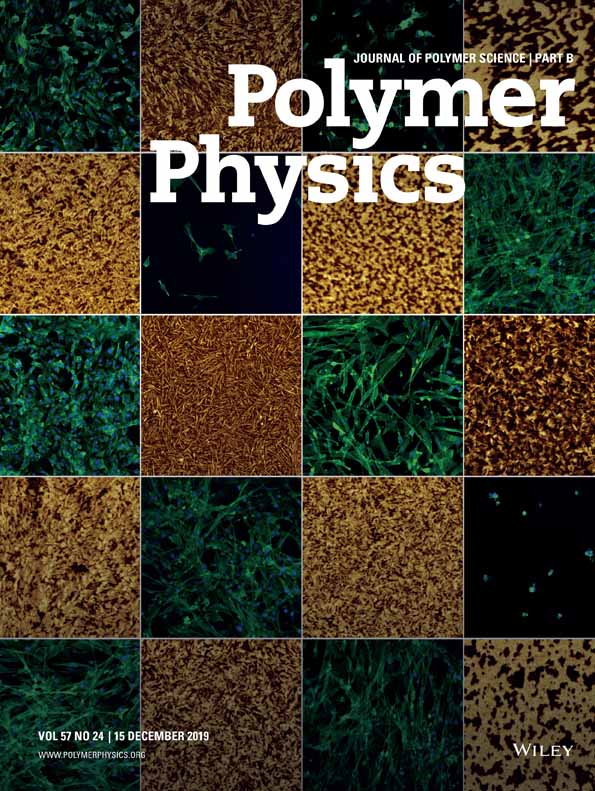Order in amorphous di-n-alkyl itaconate polymers, copolymers, and blends
Abstract
The presence of a main-chain correlation distance (dII) in the poly(di-n-alkyl itaconate)s was confirmed with small-angle X-ray scattering/wide-angle X-ray scattering measurements taken over the temperature range of 293–478 K. Data for a series of alkyl acrylate polymers were also obtained for comparison. The intensity of the itaconate dII peak was significant and indicated a greater level of nanophase formation than in analogous systems. In the lower members of the series, nanophase formation appeared to be further enhanced in the temperature range above the glass-transition temperature (Tg). This was ascribed to the rapidly increasing main-chain mobility in this region. Macroscopically phase-separated itaconate blends displayed the individual dII nanospacings of each homopolymer component. Copolymers, on the other hand, showed more interesting behavior. Poly(methyl-co-di-n-butyl itaconate) followed an average behavior in which the dII spacing and Tg changed progressively with the comonomer content. In contrast, the side-chain pairing in poly(methyl-co-di-n-octyl itaconate) generated dII spacings characteristic of separate methyl and octyl nanodomains. The observation of the dioctyl nanodomains, along with the dioctyl side-chain lower Tg relaxation event, confirmed the concept of independent side-chain-domain relaxation in these polymers. The temperature behavior of the poly(methyl-co-di-n-octyl itaconate) small-angle X-ray scattering profiles and scattering correlation lengths indicated that the two nanodomains were not completely structurally independent. © 2004 Wiley Periodicals, Inc. J Polym Sci Part B: Polym Phys 42: 4000–4016, 2004




